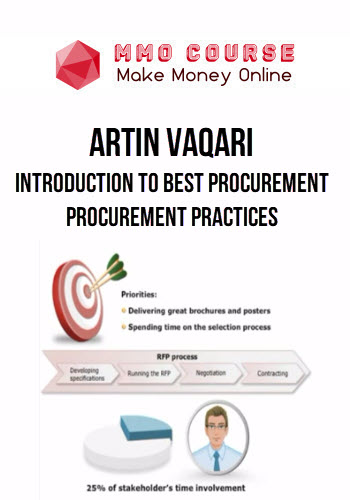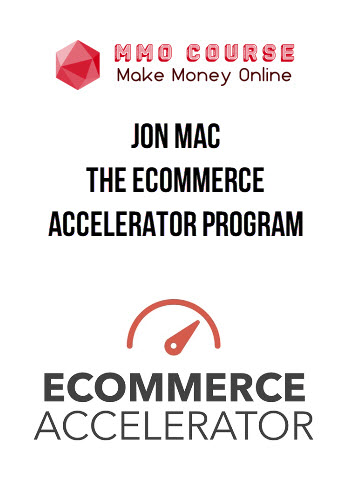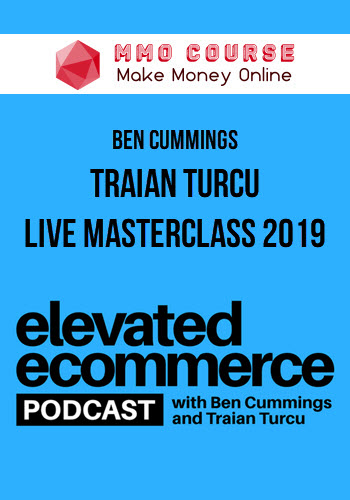Artin Vaqari – Introduction to Best Procurement Procurement Practices
$197.00 $89.00
Delivery: Within 7 days
Description
Artin Vaqari – Introduction to Best Procurement Procurement Practices
122 Short Scenario Based E-Learning Snippets with a total 5 Hours Learning Time.
Taken from CIPP & CIAPP Procurement Certification Programs. Quick summaries & introductions to …
- Procurement Analysis
- Strategic Sourcing & E-Sourcing
- Tenders & RFXs
- Procurement Negotiations & Advanced Negotiations
- Cost Management & TCO
- Finance Concepts for Procurement
- Supplier Development & Supplier Relationship Management
- Contract Management & Service Level Agreements (SLAs)
- Contract Terms & Legal Aspects in Procurement
- Fraud Prevention
- Procurement Category Management
- Value Management
- Developing a Business Case
What You’ll Learn In Introduction to Best Procurement Procurement Practices
Procurement Analysis
- Portfolio Analysis
- ABC/Pareto/Spend Analysis
- Make or Buy Analysis
- RONA Financial Ratio or Dupont Model
- quiz 1
Strategic Sourcing
- Process Overview – Sourcing (Upstream) & Operational Procurement (Downstream) Process
- Intro to Sourcing Process 1 – Capturing the Need
- Intro to Sourcing Process 2 – Market Analysis
- Intro to Sourcing Process 3 – Portfolio Analysis – Kraljic Matrix
- Intro to Sourcing Process Step 4 – Supplier Relationship Analysis
- Intro to Sourcing Process Step 5 – Risk Management
- Intro to Sourcing Process 6 – Supplier Selection
Tenders & RFXs
- How to Develop Specifications.mp4
- Challenge Specifications.mp4
- Difference between RFQ and RFI.mp4
- Request for Proposal – RFP.mp4
eSourcing
- eSourcing – Introduction
- eSourcing – eAuction Types
- eSourcing – Building an eRFI
- eSourcing – Building an eRFP
- eSourcing – Managing an eAuction
Cost Management & TCO
- Introduction to Cost Management
- How is Price Different from Cost?
- Intro to Cost Calculation & Cost Estimation
- Six Cost Calculation Approaches
- Cost Calculation and Pricing.mp4
- Total Cost of Ownership TCO – Importance of Understanding Total Cost
Finance Concepts for Procurement
- Finance Course – Understanding Profit and Loss for Buyers
- Finance Course – Application of Profit
- Finance Course – Balance Sheet – Structure and Analysis
- Finance Course – Assets and Liabilities
- Finance Course – Types of Ratios
Procurement Negotiations
- Negotiation Preparation.mp4
- Identifying ZOPA!
- 6 Difficult Questions from Suppliers
- Negotiation Styles
- Opening the Negotiation
- The Wrong Way to Conduct a Negotiation Meeting
- The Right Way to Conduct a Negotiation Meeting
- Body Language During a Negotiation Meeting
- How to Bargain – The Negotiation
- Tips for Negotiation
- Handling Questions – Negotiation Tips
- Closing the Negotiations
Advanced Negotiations
- NLP – The Process
- NLP – Improve Yourself
- NLP – Resolving Conflict
- NLP – Build Rapport
- NLP – Model Inner Experience
- NLP – Influence Others
- NLP – Read Other Party
- Cognitive Bias in Negotiations – Definitions
- Cognitive Bias in Negotiations – The Anchor Bias
- Cognitive Bias in Negotiations – The Confirmation Bias
- Cognitive Bias in Negotiations -The Framing Effect
- Cognitive Bias in Negotiations – The Halo Effect
Contract Management & Service Level Agreements (SLAs)
- The Right Approach to Contract Management
- Assessing the Required Level of Contract Management
- Risk Management
- Issues in Contract Execution
- Service Delivery Management
- SLA – Defining KPI’s.mp4
- SLA – Needs Assessment.mp4
- SLA – Plan and Do Steps.mp4
- SLA – Quality Management.mp4
Fraud Prevention
- Fraud Prevention – Definitions.mp4
- Fraud Prevention – Preventive Actions.mp4
- Fraud Scenario.mp4
- Cressey’s Triangle.mp4
Supplier Development (SD) & Relationship Management (SRM)
- SD – Results of Supplier Development
- SRM – Definition
- SRM – The Process
- SD – What is Supplier Development
- SRM – Supplier Identification
- SRM – Supplier Segmentation
- Supplier Performance Management
- SRM – Supplier Relationship Analysis
- SRM – Supplier Relationship Analysis – The Tool
- SRM – Supplier Preference Table: A Tool to Manage the Relationship with Suppliers
Contract Terms & Legal Concepts for Procurement
- Contracts Issues in Procurement – An Overview
- Is a Contract Necessary
- Important Clauses of a Contract
- Rejecting a Delivery
- Incoterms Importance
- Incoterms – Groups & Classes
Value Management
- Value Management – Negotiation.mp4
- Value Management – In & OutSourcing.mp4
- Value Management – Supplier Development.mp4
- Value Management – Value Improvement Lever Implementation.mp4
- Value Management – Value Improvement Levers.mp4
Developing a Business Case
- Business Case – Definitions.mp4
- Business Case – Contents.mp4
- Business Case – Estimating costs.mp4
- Business Case – Recapitulation.mp4
Procurement Category Management (CM)
- CM – The Key Principles
- CM – The Category Manager
- CM – The Process
- CM – Stage 1 – Initiation – The STP Tool
- CM – Definition
- CM – Phase 1 – Initiation – Step 1 – Securing the Sponsor
- CM – Phase 1 – Initiation – Step 2 – The Cross Functional Team
- CM – Stage 1 – Initiation – Step 3 – Scoping the Category
- CM – Phase 1 – Initiation – Step 4 – Defining the Business Requirements
- CM – Phase 1 – Initiation – Step 4 – The RAQSCI Method
- CM – Phase 1 – Initiation – Step 6 – Stakeholder Mapping
- CM – Phase 1 – Initiation – Step 10 – Securing Quick Wins
- CM – Phase 2 – Knowledge Handling
- CM – Phase 2 – Analysis – Step 5 – Technology Mapping
- CM – Phase 2 – Analysis – Step 6 – The Porter 5 Forces Model
- CM – Phase 2 – The PESTLE Tool
- CM – Phase 3 – Strategy – Step 1 – Generate Ideas Method
- CM – Phase 3 – Strategy – Step 5 – The Category Plan
- CM – Phase 3 – Strategy – SWOT
- CM – Phase 4 – Implementation – The Change Curve
- CM – Phase 5 – Improvement – 6 Sigma Part 1
- CM – Phase 5 – 6 Sigma Part 2
- Project Management & Project Time Planning
- Project Management – Definition
- Project Management – Process
- Project Management – Principles
- Project Time Planning – Process
- Project Time Planning – Resources
- Project Time Planning – Break down
- Project Time Planning – Critical path
Sale Page: Artin Vaqari – Introduction to Best Procurement Procurement Practices
Delivery Policy
When will I receive my course?
You will receive a link to download your course immediately or within 1 to 21 days. It depends on the product you buy, so please read the short description of the product carefully before making a purchase.
How is my course delivered?
We share courses through Google Drive, so once your order is complete, you'll receive an invitation to view the course in your email.
To avoid any delay in delivery, please provide a Google mail and enter your email address correctly in the Checkout Page.
In case you submit a wrong email address, please contact us to resend the course to the correct email.
How do I check status of my order?
Please log in to MMOCourse account then go to Order Page. You will find all your orders includes number, date, status and total price.
If the status is Processing: Your course is being uploaded. Please be patient and wait for us to complete your order. If your order has multiple courses and one of them has not been updated with the download link, the status of the order is also Processing.
If the status is Completed: Your course is ready for immediate download. Click "VIEW" to view details and download the course.
Where can I find my course?
Once your order is complete, a link to download the course will automatically be sent to your email.
You can also get the download link by logging into your mmocourse.hk account then going to Downloads Page.










